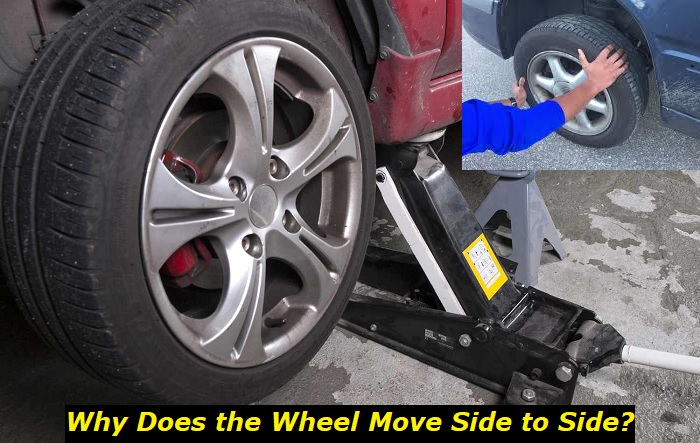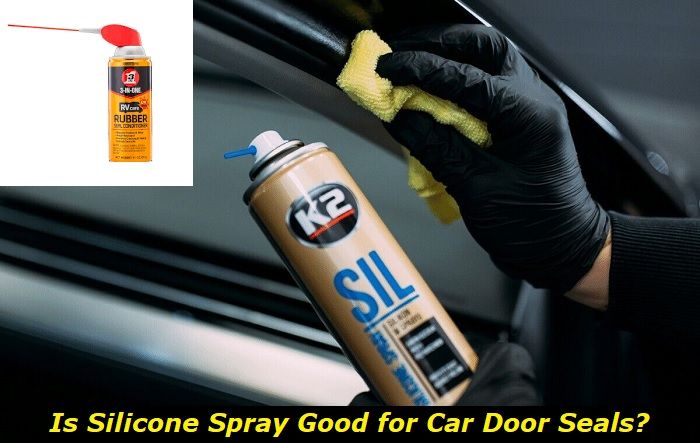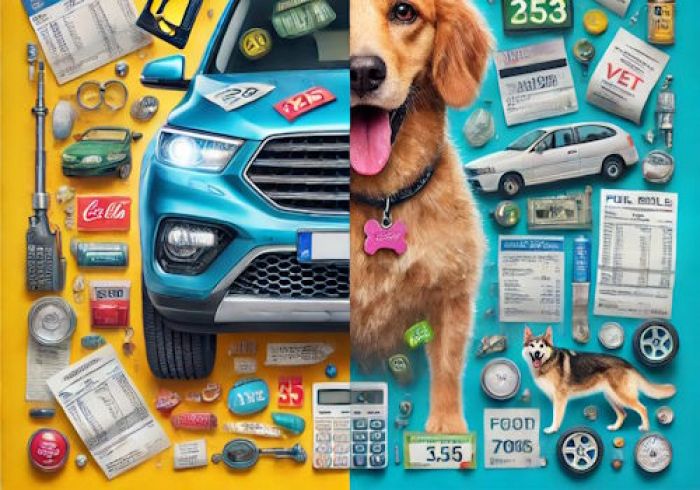When you drive your vehicle for some months, there is bound to be some wear and tear. It is not safe to assume that an oil change and a trip to the service bay for regular check-ups are sufficient to give your car a clean bill of health. You need to listen to your vehicle as you drive. Listening or conducting daily checks on your car before you drive off helps you catch problems before they become major mechanical disasters.
Suspension anomalies highlights
- Level of importance:medium
- Common reasons:all kinds of suspension problems
- DIY inspection:possible but complicated
- DIY repair:impossible
- Average price in shops:$250 - $800
- Average time:1 - 8 hours
- If ignored:suspension fatal failure, no-drive

The wheel moves side to side when jacked up
You might have noticed that your vehicle is shaking, but you can't tell what the problem is. After you have checked the tire pressure and all the other possible causes that are likely to make the vehicle shake, it is time to pack the car and jack it up. When the wheel of a car is elevated, it tells more tales than when it's on the ground.
Once the wheels are up, a mechanic will shake the wheel and will almost instantly tell what's the problem. To a layperson, the mechanic might seem to be shaking the wheel anyhow. However, there is a specific way a mechanic will shake the wheel to tell if it is the upper tie rod with an issue or the ball joints. Let us now look at the various reasons why the wheels can shake when jacked up.
Reasons why the wheel moves side to side when jacked up
1) Bad ball joints
Ball joints play a crucial role in connecting the control arms to the wheel hubs. They serve as a universal pivoting point of movement between the arms and the hub. This then gives you vehicle control and ensures your ride is smooth. Each wheel has an upper and a lower ball joint that looks more like a hip joint.
When a ball joint wears out, there is usually some ''play'' on the wheel, making that wheel come out of alignment with the other wheel. When you continue driving your car, when a ball joint is worn out, the affected tire will wear out unevenly. The other symptom of worn-out ball joint is harsh cabin vibrations and a wandering steering wheel.
A faulty ball joint is the culprit when you jack up the car and notice the wheel shaking with ease. You will find that the mechanic will grab the lifted tire at the 12-6 clock position. When the wheel shakes when held this way, it is time to start working on how to replace the ball joints.
Fix
The answer to a ball joint problem is to replace the affected ball joint. It is imperative to note that for good care of your vehicle, always replace the ball joints as a pair. It will not be of much help to replace just the affected ball joint and leave the other wheel. Replacing a single ball joint and leaving the other wheel will force you to visit the mechanic in a few months. To be sure the ball joint problem is sorted once and for all, replace for both wheels at once.
2) Bad tie rods
A tie rod forms part of the steering system in your vehicle. The tie rods in your car connect the steering knuckle and the steering rack. When you steer the car, it is the tie rods that make all this possible. A malfunction on the part of the tie rod can make the car extremely unsafe. However, before the problem becomes severe, there are some symptoms that can help you pick out the problem early.
When the tie rod is faulty, one of the first signs to pick is a shaking sensation in your steering wheel. This is accompanied by vibrations in the steering wheel and some rattling noise when driving at low speeds. To confirm that the tie rods are bad, the mechanic will shake the wheel at the 9-3 clock positions.
To further confirm that the tie rod is at fault, you should put your hand over the inner hidden boot close to the center cross member and feel for any movement. You can also hold the outer tie rod that is close to the tire and feel if there is any play. This test will best be done with another pair of helping hands wiggling the tire side by side as you confirm any play on the tie rods. If the play is several inches, driving such a vehicle is very dangerous.
Fix
The answer to a tie rod problem is to fix the tie rod. A new tie rod will cost you between $40 and $150. The labor of this job is quite involving, and you will be charged between $100 and $400. Just like the ball joints, replacing tie rods as a set is advisable.
3) Wheel bearing
A wheel bearing is an important part of the wheel assembly. It joins the axle and the wheel. Normally, a wheel bearing is a set of small steel balls or tapers held together by a metal ring. As a whole, the wheel bearing allows the wheel to rotate with minimal friction.
There is quite a long list of symptoms that can help you know if your car's wheel bearings are bad. The most obvious and probably the scariest is the sudden loud, growing noise when the bearing fails. Other symptoms include uneven tire wear, ABS failure, vehicle pulling to one side, and a humming sound, which should serve as a first warning sign. When jacked up, a bad wheel bearing will make the wheel wobble in all directions.
You have a bad wheel bearing when you move the wheel at 9-3 o'clock, and the wheel still moves side to side at 12-6 o'clock. But this should be the case once you are satisfied that the tie rod and the ball joints are functioning as intended.
Fix
Fixing a faulty wheel bearing may not require buying a set for both wheels since the bearing can malfunction for several reasons. Replacing the wheel bearing is quite intense, and mechanical expertise is required. The cost will be around $400 for most cars, though luxury brands can cost much more.
4) FCAB bushings
Front control arm bushings, or FCAB bushings as they are commonly referred to, are critical parts of the wheel system in your vehicle. The bushings allow the control arm to float in the center. Consequently, this helps keep the noise down while allowing the adjustment of the caster and the wheel position.
Defective FCAB bushings display various symptoms, such as clunking noise, poor steering response, and vibrations. You will also note uneven wear and tear of tires and excessive vibration while braking.
Fix
The answer to faulty FCAB bushings is to replace them. Replacing this bushing is quite intensive, and the expertise of a qualified mechanic is essential. While a single bushing can cost as low as $30, replacement costs can rise up to $300 for some vehicles.
5) Axle nut
An axle nut is used to secure the outer flange of the wheel to the CV joint. When the axle nut is tightened, it will pull the flange and the CV joint or stub axle together. When these two components are tightened together, they form the preload of the wheel bearings.
Sometimes, when the axle nut is not tightened correctly, it will cause damage to the wheel bearing. The axle nut will cause damage to the wheel bearing threads. While sounds might be heard from the affected wheel, the other symptom that might be present is a shaking, jacked-up wheel.
Fix
The solution to this problem will obviously require that you properly diagnose the loose axle nut first. If the wheel bearing has not been damaged, rectifying this issue should take less than ten minutes. This is because all you need is to tighten the axle nut, and then you will be good to hit the road.
Conclusion
In our article, we have established the various reasons that will cause the tire to move side to side when you jack up the car. We have learned of the various roles the affected components play in making the car safe on the road. It is for this reason that we urge you to take immediate remedial measures whenever you discover that the wheels are shaking. The answer can be easy and cheap, but if neglected, the affected part can fail completely and cause a serious accident.
About the authors
The CarAraC research team is composed of seasoned auto mechanics and automotive industry professionals, including individuals with advanced degrees and certifications in their field. Our team members boast prestigious credentials, reflecting their extensive knowledge and skills. These qualifications include: IMI: Institute of the Motor Industry, ASE-Certified Master Automobile Technicians; Coventry University, Graduate of MA in Automotive Journalism; Politecnico di Torino, Italy, MS Automotive Engineering; Ss. Cyril and Methodius University in Skopje, Mechanical University in Skopje; TOC Automotive College; DHA Suffa University, Department of Mechanical Engineering






Add comment